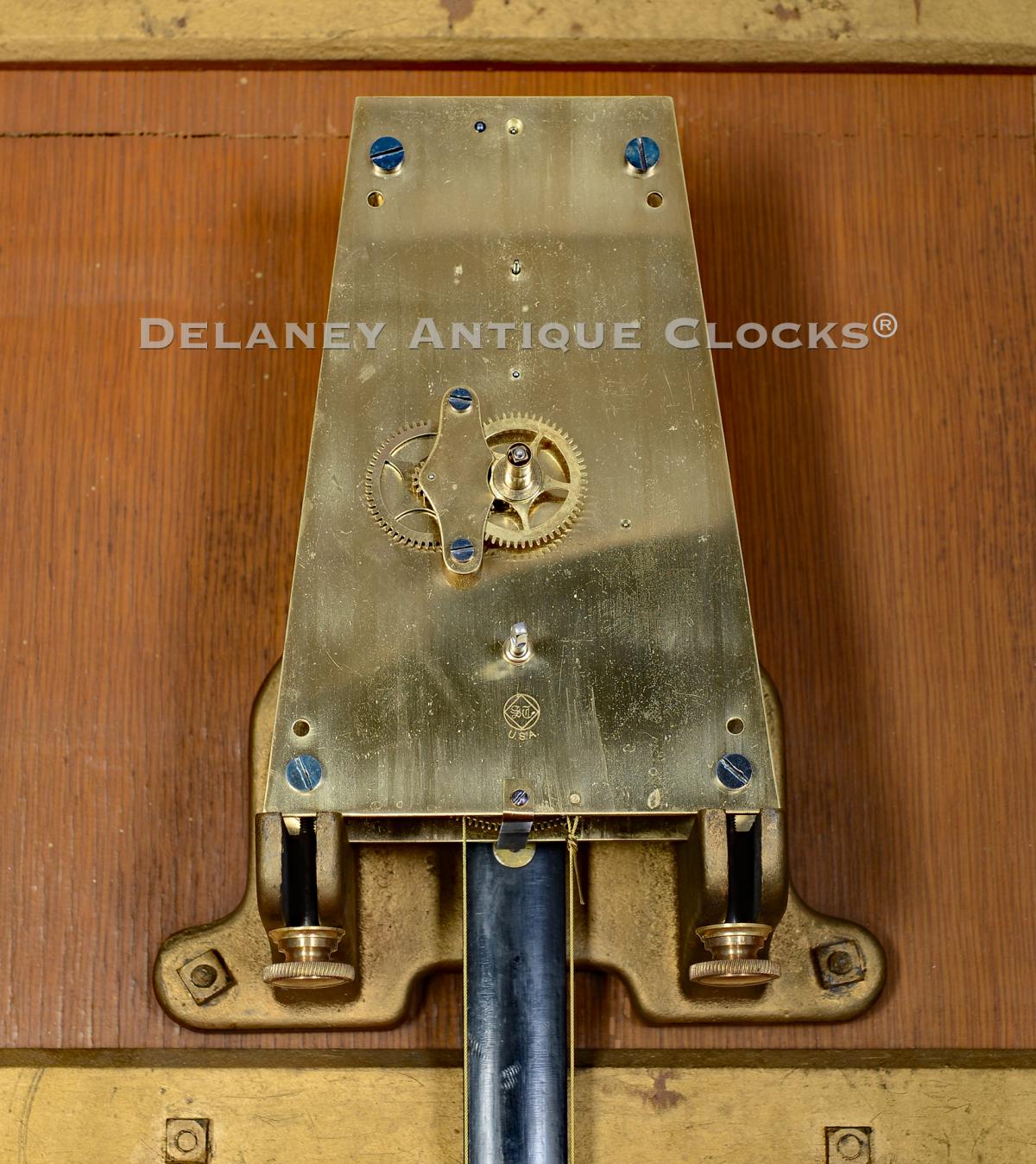The Seth Thomas Wall Regulator No. 31. 223148.
This impressive oak case wall regulator measures 68 inches long, 25 inches wide, and 9 inches deep. Large regulators like this one were designed to hang in public places. Their large size makes them ideal for large rooms. We installed one of these in the foyer of a manufacturing business. The owner had us put his company name on the lower glass, and we hung it behind the receptionist's desk. It was an instant hit.
This is an oak case example. The outside surfaces have been waxed and have taken on a lovely, warm honey color. The interior surfaces remain in their original color. The case features many decorative details, including turned finials and shaped moldings, often decorated with a reeded design and panels. The backboard features a large inset panel.
The large painted zinc dial, framed with a brass bezel and measuring 18 inches in diameter, displays the hours in large Arabic numerals. The seconds are displayed on a subsidiary dial. The hour and minute are displayed by two large decorative hands that retain their original blueing. The minute hand, due to its length, is counterbalanced.
The brass-constructed movement is of very good quality. The trapezoid-shaped plates are taper at the top. The front plate is die-stamped with the Maker's name and trademark. The plates frame the steel shafts, brass gearing, and the Graham deadbeat escapement. This escapement is adjustable from the top. The gearing incorporates maintaining or retaining power. This eight-day movement is weight-powered and wound with a crank key. The weight is also covered in brass and descends in front of the pendulum. A shaped wood rod supports the brass-faced pendulum bob. This is suspended from an iron bracket that is mounted to the backboard. Please note that the swing indicator is mounted to the backboard.
This large wall clock was made circa 1900.
Inventory number 223148.
Seth Thomas was born in Wolcott, Connecticut, in 1785. He was apprenticed as a carpenter and joiner and worked building houses and barns. He started in the clock business in 1807, working for clockmaker Eli Terry. Thomas formed a clock-making partnership in Plymouth, Connecticut, with Eli Terry and Silas Hoadley as Terry, Thomas & Hoadley. In 1810, he bought Terry's clock business, making tall clocks with wooden movements. Seth chose to sell his shares in the partnership in 1812, moving in 1813 to Plymouth Hollow, Connecticut, where he set up a factory to make metal-movement clocks. In 1817, he added shelf and mantel clocks. By the mid-1840s, He successfully transitioned to brass movements and expanded his operations by building a brass rolling mill and a cotton factory. In 1853, He incorporated the business but continued to be the majority shareholder. This clock business expanded until it became one of the "BIG Seven" in Connecticut. Their product line had offerings that competed at every price point, from kitchen clocks to precision regulators. Seth Thomas died in 1859. The community of Plymouth Hollow so revered him that they changed the name on July 6, 1875, to Thomaston in his honor. After his death, his son, Aaron, took over the company's leadership. Aaron is credited with increasing the business by adding a number of new case styles and improving production methods. The company went out of business in the 1980s.












